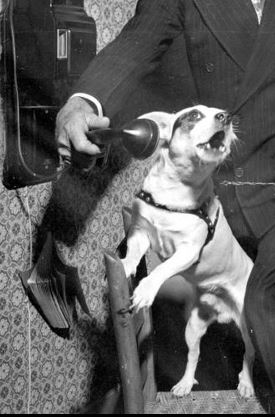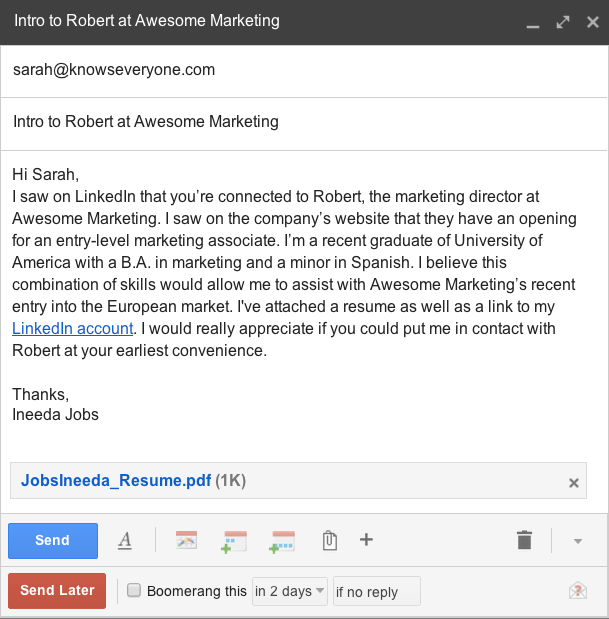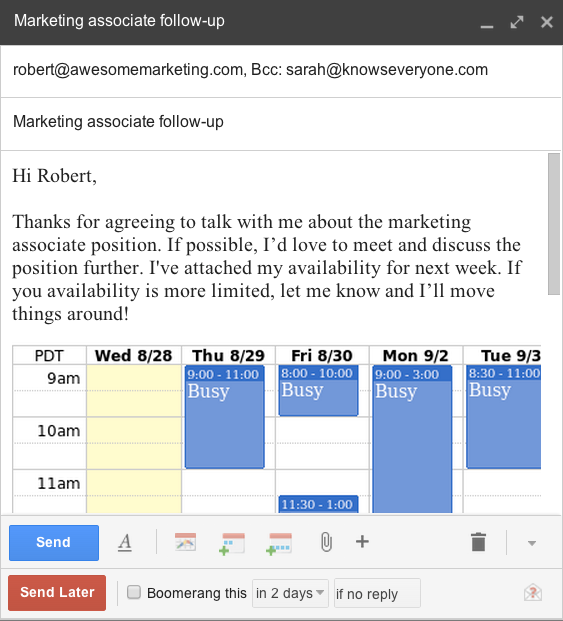
Introductions are a valuable way to expand our connections, but are dangerous to our reputation when they’re badly executed. In this email etiquette post, Baydin explains the etiquette of asking for an introduction.
Last week we talked about double opt-in introductions (read about it here). This week, we’re backing up to discuss the etiquette of asking for an introduction. Whether you’re searching for your first job, trying to change careers, or seeking an investment, being introduced to the right person can help–a lot. The best way to get an introduction is by utilizing well-connected contact that you already have, like your acquaintance Sarah, who seems to know everyone who’s ever been employed. Ever.
What not to do:
Don’t spam Sarah with nonspecific requests like, “Hey, I’m a really awesome person and I want to meet people who will hire me.” This type of introduction is frustrating to Sarah because it asks her to do a ton of work on your behalf, spam all her contacts, or give you the polite “Sorry, I’m so busy, let me get back to you next month” blowoff, none of which are good options.
Don’t email Sarah with a request void of context like, “Hey Sarah, I want you to introduce me to your VIP friend Robert.” Sarah’s not going to feel comfortable introducing you to Robert if she doesn’t have the context to determine whether the introduction will be valuable. After all, a bad introduction could damage her own reputation.
What to do (“The Proper Etiquette of Asking for an Introduction”):
1. If you think that meeting Robert will provide value for both of you, do research and prove it. Make it as easy as possible for Sarah to help you by writing a paragraph that includes context (information that states how you plan to create value for the target contact), hyperlinks to important information, and contact information. This allows Sarah to ask Robert’s permission to opt-in by easily copy/pasting the information you’ve supplied.
Boomerang for Gmail lets you schedule mail, Boomerang follow-up reminders, and track whether your message has been opened–all super useful for job applicants! Check it out here.
2. Once Sarah’s gotten permission from Robert and introduced you, reply to Robert and move Sarah to Bcc. This lets her know that you followed up without entangling her in the email thread that is likely to follow.
3. Make your reply to Robert easily actionable. Because he opted in to the introduction, you know he’s at least moderately interested, so suggest meeting to discuss the position further. If you have limited availability, Boomerang Calendar is an easy way to embed your availability (pictured below) and keep track of the times that you suggest.
Now all Robert has to do is pick an available time slot (or suggest his own) and you’re on your way to employment.
Following proper email etiquette illustrates the triple value of a great introduction: you were able to meet with a potential employer, Sarah was able to build her credibility with Robert by facilitating a valuable introduction, and Robert was able to meet a prospective employee who comes with a trustworthy recommendation. Aw, shucks. What a warm fuzzy feeling.
Click to Tweet: No need to beg! Ask for introductions the right way and create warm, fuzzy feelings for everyone @baydin
Edit: We published a full article on email etiquette since posting this. Check it out!



If someone sent me that blocky schedule, I would ignore them completely! It feels like it’s targeted to mass contacts and very impersonal. Giving three available times is enough and leaving it open to discussing additional dates if those don’t work out is perfect.